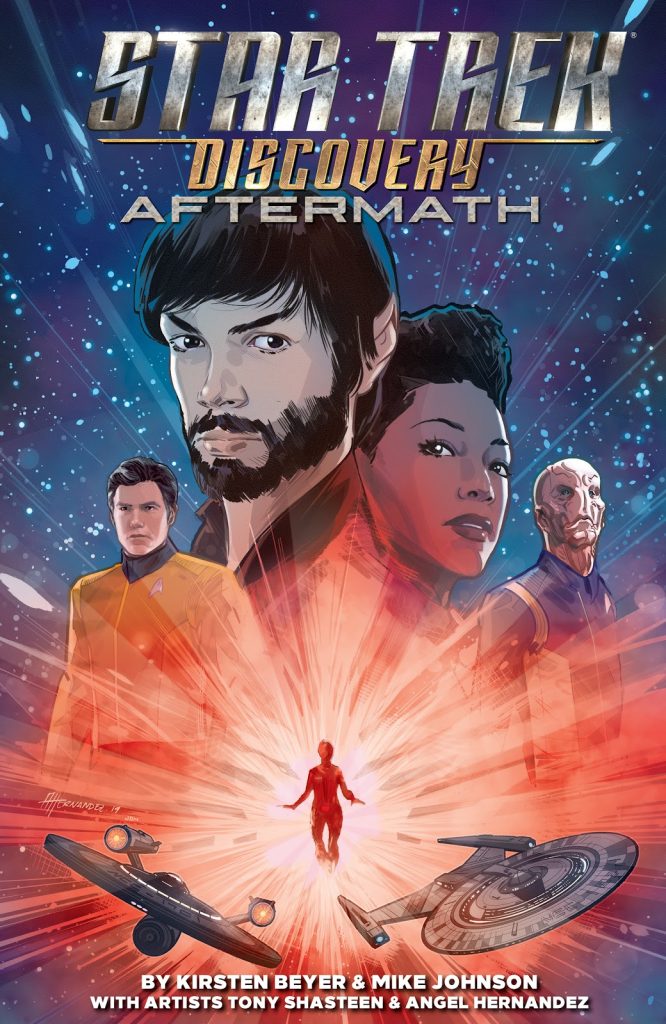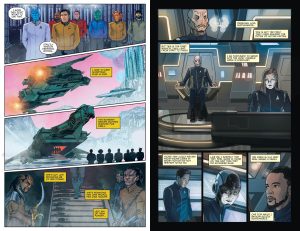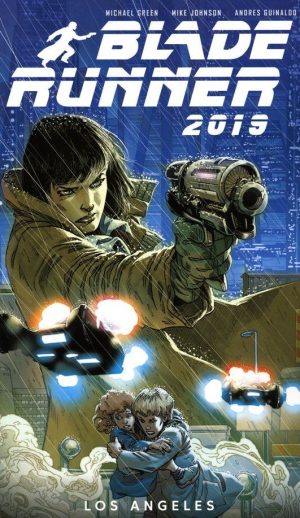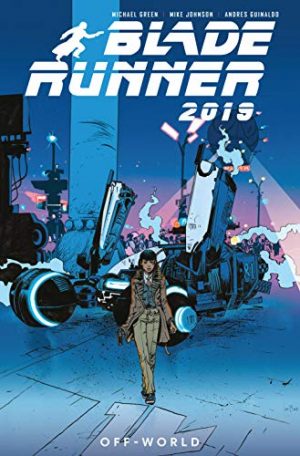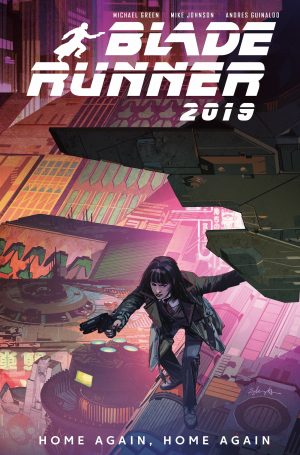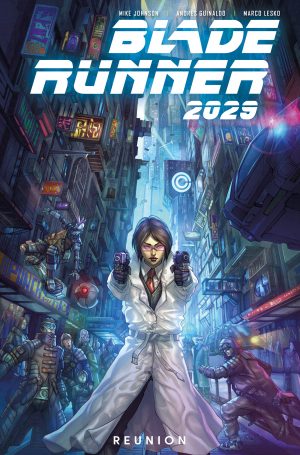Review by Ian Keogh
The second TV season of Star Trek: Discovery ended with the Discovery departed for an unknown future that remains the province of the TV show. The main story in Aftermath concerns itself with the cast members who remained behind in the 23rd century. After the aid of L’Rell during the decisive end of season battle, Captain Christopher Pike sees an opportunity to build bridges with the Klingon Empire, and so reaches out. However, the Klingons have long seen any attempt at peace and friendship as weakness, so is Pike being treated as an idiot?
Kirsteen Beyer and Mike Johnson wrote The Light of Kahless, which focussed exclusively on the Klingon Empire, so have done their research, but despite Discovery having a freshness, it’s still restricted to a degree by being set before the original Star Trek TV show, and locked into that continuity. There’s plenty of room for original stories, but when it comes to bigger picture matters, such as tension between the Federation and the Klingon Empire, they must remain as they were in Captain Kirk’s time. It means the talks are destined to fail, but the question is how? Beyer and Johnson deliver that well, with L’Rell and Spock the two primary characters.
Artist Tony Shasteen is also back, and he’s fantastic with the smaller detailed textures, and provides decent cast likenesses, but the one massive visual spectacle in the script is a missed opportunity. It occupies a spread, yet Shasteen’s attention is on decorative smoke. The script doesn’t supply Angel Hernandez with any equivalent moments on the shorter accompanying story. His work requires interpreting a considerable number of conversations and first person narrative captions, yet his crew likeness have a stronger emotional look to them, and his starship illustrations have a presence.
The second story deals with Saru commanding a starship for the first time. It’s a rescue mission set shortly after the end of the Klingon War, and as with the main feature the writers include nice small touches bolstering a rounded story. It’s nice to see archaeologist Dorothy Garrod will be commemorated by having a starship named after her, for instance. This is a better story than ‘Aftermath’ for being equally character based, but also having a start, evolution and definitive conclusion rather than being an interlude. There’s also some appealing trickery.
An innovation of Discovery is that for the first time it’s not a Starfleet Captain as the central character of a Star Trek show, yet Michael Burnham’s presence in the first story is minimal and while more prominent in the second, she’s hardly essential. Her fans may be disappointed, but this has a broader appeal than The Light of Kahless or Sucession.
